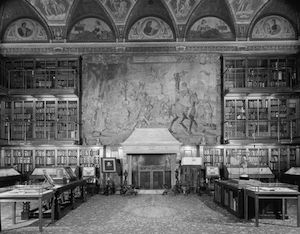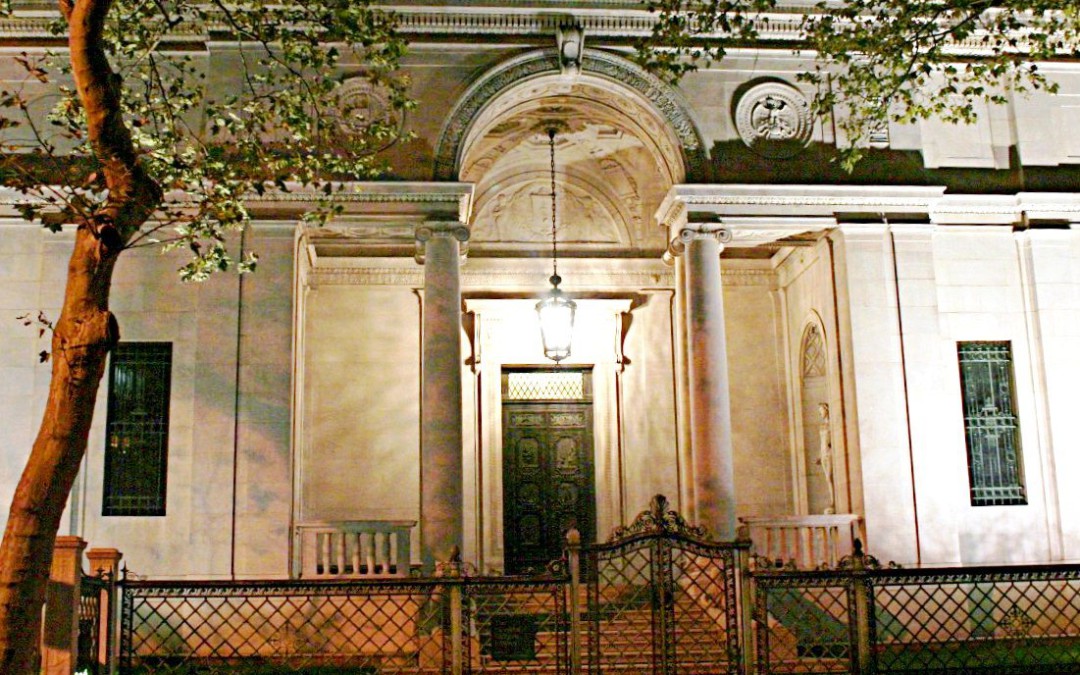The Morgan Library & Museum was founded in 1906 to house the personal collection of John Pierpont (JP) Morgan, banking mogul and robber baron. His passion for art drew him towards Egyptian to Impressionist, to Chinese art. But his true passion was printed materials: manuscripts, printed books and old drawings. It was due to this obsession that a personal collection of the earliest Egyptian and American text was curated. But aside from what treasures abound inside, it should be noted that the edifice which holds Morgan’s collection is as indicative of the decadence of the era as what is within.
The impressive structure, located at 225 Madison Ave at 36th street, stands close to where JP Morgan once lived. The two lionesses guarding the entry are a perfect counterpart to the lions of the main branch of the NYC public library just a few blocks away. Today, $1.2 million may be a small price to pay to erect an institution. But in 1906, when it was constructed, the sum was gasp-worthy, and Morgan kept a watchful eye over every dollar spent.
The interior of the building is richly decorated, with a rotunda leading to three public rooms: Morgan’s private study, the librarian’s office, and the library itself. Morgan’s study, now the West Library, has been called “one of the greatest achievements of American interior decoration”, with vast domed ceilings and classical revivalist murals (a particularly American style that was en vogue for the elite moneyed class of his day.) The east Library ripples with triple tiers of mysterious books and manuscripts, some being the oldest and most ancient texts of Egypt and the United States that exist today.
Other rarities include the Codex Glazier (a Coptic parchment of the New Testament from the 4th or 5th century), one of the world’s greatest collections of ancient Near Eastern cylinder seals (small stone cylinders finely engraved with images for transfer to clay by rolling) and a copy of a letter written from India in 1516 by Andrea Corsali containing the first description of the Southern Cross. This letter is one of the only 5 of its kind in existence.
The most striking aspect of the Morgan Library & Museum is that it is alive with John Pierpont Morgan’s obsession for the written word. Even today, the works encased have a relevancy which makes it ‘a living museum’, with rare collections open to scholars and students for active study.

Interior of Morgan Library and Museum
With continual generous endowment, partly due to the exceptional curatorial and management staff, the Morgan remains active in its acquisitions and stalwart in its preservation of the core collection. Alongside Morgan’s original collection of manuscripts, the Morgan Library & Museum now also houses early children’s books and other text-driven manuscripts.
In considering the written word as the ultimate form of art, JP Morgan knowingly or unknowingly supported the theory that history itself is art.
Next week, Part III: The Collection of Henry Clay Frick












